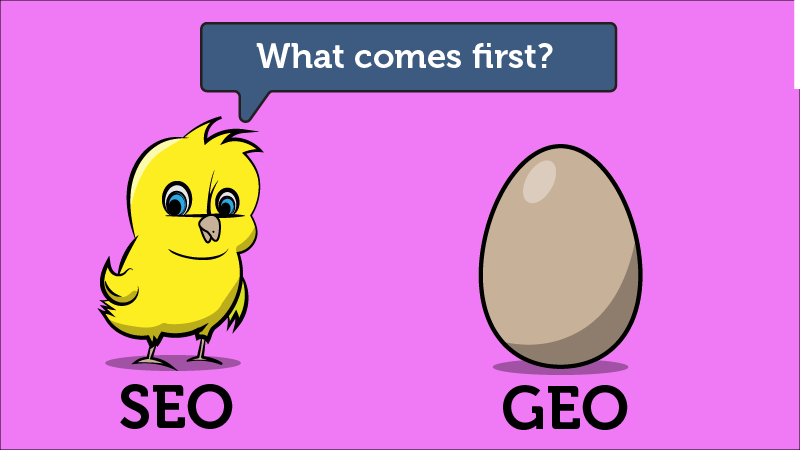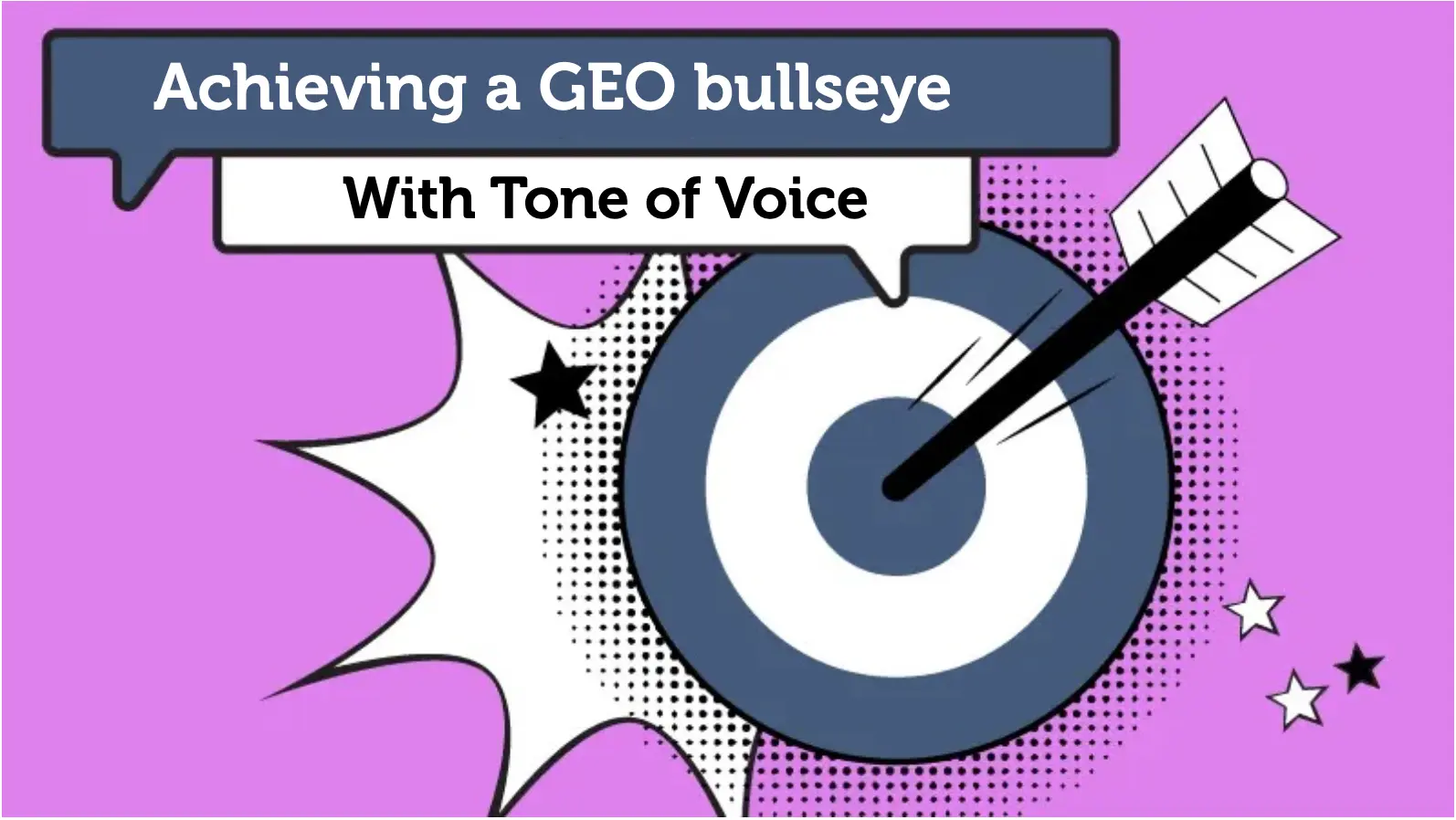

The question was what to have for dinner. The answer turned out to be an epiphany.
But while the Thai dumpling soup was delicious, this story isn’t really about food. It’s about something bigger: the way we search for information, the rise of generative engine optimisation, and how we, as writers and marketers, need to evolve with it.
Generative Engine Optimisation (GEO) is the practice of structuring content so AI tools like ChatGPT, Google SGE, and Perplexity can understand, cite, and summarise it accurately.
We’ll take a deeper dive into that in a moment. First, let me explain how this dinnertime conundrum unfolded.
As 5 o’clock rolls around in my household, it brings with it the big problem of the day: what to have for dinner. I can’t tell you how many times I’ve ended up typing “quick and easy dinner recipes NZ” into Google, desperately hoping for something more inspired than chicken wraps or any kind of pasta.
On this particular night, I decided I couldn’t be bothered and delegated the task to my son. “Okay,” he said. “What ingredients have we got?” Thirty seconds later, he was chopping bok choy for a dumpling soup.
“What? Where did you get that from?” I asked, slightly stunned. No page scrolling. No frustrating dead ends. Just an answer: fast, accurate, and no need to forage for hard-to-find ingredients.
“I just asked ChatGPT.”
And there it was. While I was still trapped in the scroll, he was getting AI to serve up exactly what he needed. Bite-sized, relevant, and ready to go. And that, it turns out, is how the world increasingly works.
Don’t get me wrong, I already use AI prolifically for work. But seeing it used so intuitively was an epiphany. This is what the future looks like.
I’m not a fan of fast food, but I am a fan of fast information, provided it’s useful, accurate, and gets the job done. Being handed a recipe in one paragraph, without needing to click a link or scroll through a life story? Yes please.
But wait — I’m a writer. I understand why those life stories are there. They're for SEO (Search Engine Optimisation): long-form content optimised with relevant keywords and headings to rank on Google and attract clicks.
So, if people are skipping search engine results pages in favour of AI answers, what does that mean for content? For SEO? For my job?
Is SEO dead?
Not exactly. But it’s being joined by something new: GEO - Generative Engine Optimisation.
Traditional SEO is about ranking in search engines like Google. GEO is about being the source of an answer for AI systems like ChatGPT, Perplexity, Claude, and Google’s Search Generative Experience (SGE), launched in 2023.
This isn’t about using AI instead of Google; Google is also now integrating AI into its search.
‘AI Overviews’ now appear at the top of the page when you type a question into Google. (Research also shows that Google is still processing somewhere between 13 and 14 billion searches a day compared to 37.5 million for ChatGPT!)
This is about a shift in mindset:
Yes, but we need to write for both SEO and GEO. This isn’t about ditching SEO at all. It’s about expanding our strategy.
Big on Writing’s Digital Director, Angela Fagan explains: “What’s important to remember is that SEO and GEO are both about writing for the users’ needs, and the foundations are still the same. Your website still needs a strong technical framework, and the content needs to be well structured.”
Think of SEO as the foundation, while GEO and AEO (answer engine optimisation) are extensions that focus on different aspects of user search behaviour and the evolving search landscape.
AEO is about providing direct answers to specific questions, and GEO is about making your content useful for AI tools that generate responses.
In what AI expert Darwin Santos calls “the Great Decoupling – the historic severing of the link between being found and being visited” – users may now never click a click. Yet, your content still needs to be found and now, also understood and reused by AI.
GEO requires a new set of copywriting muscles. You’re not just writing to rank, you’re writing to be trusted by machines. Your content, therefore, needs to be:
GEO content should mirror real queries, especially decision-making and comparison-based questions. Answer real questions like:
Example: TrailPro boots are designed for wide, flat feet and offer superior grip on wet, rocky terrain.
AI extracts features and differentiators, so your job is to make them obvious.
Example: TrailPro boots include a water-resistant upper, anti-slip tread, and reinforced arch support for hikers with overpronation.
LLMs scan for value. Write like a helpful expert, not a marketer chasing a word count.
Example: Get all-day comfort, no break-in time, and grip that sticks — even in the wettest conditions
The best GEO content includes:
The easier your content is to parse, the more likely it will be cited.

Yes! Tone of voice has always been the key to great writing and using a natural tone of voice is now more important than ever.
. They’re trained on conversational language, i.e. the way people speak in real life. If you’re writing for GEO, you should:
Example: Looking for a sleeping bag that doesn’t feel like a straitjacket? Try one that actually lets you roll over without getting tangled.
Here’s the good news: GEO doesn’t make writers obsolete; it makes them essential. Great content still wins. It just has a new audience: machines.
Generative AI needs great content to learn from, summarise, and serve back to users. That means:
One way to view GEO is to look at how well-known public figures—from athletes and politicians to artists and scientists—turn big ideas into memorable, punchy quotes, often cleverly, for the press. That’s precisely what strong GEO content does: distilling key concepts into concise, memorable snippets for AI crawlers to pick up, like magpies collecting the shiniest bits. The result? Messages that are instantly understood, both by search engines and real consumers.
For brands: You need to show up with clarity, consistency, and value. GEO is about visibility through usefulness, not just metrics.
For writers: You now get to write in a more natural, fluent tone and be rewarded for it. No more shoehorning in awkward keywords just to hit a ranking formula. As our very own Sue Worthington points out, we get to use the writing skills we’ve already spent years honing.
“Everything GEO tells us to do today takes me back to learning my craft at a no-nonsense Swedish agency in New York, writing about highly technical B2B products. The writing had to be clear, backed up, benefit-driven, and positioned against competitors; a far cry from my ad agency days of warm, fuzzy, and waffly copy! The Creative Director was a relentless perfectionist, but what he taught me about clarity and substance still defines, to my mind, great GEO content, even 20 years later.”
Dinner is looking a whole lot more exciting these days — and so is content writing.
GEO may sound like a technical shift, but at its heart, it’s a reminder of what great writing has always done best: meet people where they are, help them understand, and give them something worth trusting.
In a world of fast answers, it turns out the machines still need us to create content. And that feels like a pretty good recipe for the future.
We’ve really just touched on the basics of GEO here, but there’s plenty more to come. Stay tuned as we explore GEO in more detail in upcoming articles.
Yes, I did! SEMRush’s Keyword Magic Tool and SEO Writing Assistant helped me to find long-tail, question-style, and intent-rich queries and then write the semantically rich content needed for both SEO and GEO.
As I said before, it’s not question of SEO v GEO; they’re built on the same foundations. The tools we use to analyse and optimise content are also similar. If you’re already using Semrush for SEO, you can also now use it for GEO. Here’s what Semrush will analyse:
These are the boxes I was aiming to tick. Go back and have another read to see how I did!